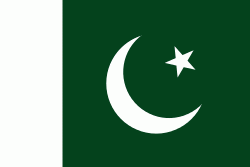Kasur District (Kasūr District)
The district capital is Kasur city, the birth city of the Sufi poet Bulleh Shah, who is well known in that region as well as in the whole of Pakistan. The total area of the district is 4,796 square kilometres.
In ancient time, Kasur was known for its education and fish. The history of Kasur is more than 1,000 years. Kasur region was agricultural region with forests during the Indus Valley civilization. The Vedic period is characterized by Indo-Aryan culture that migrated from Central Asia and settled in Punjab region. The Kambojas, Daradas, Kaikayas, Pauravas, Yaudheyas, Malavas and Kurus migrated, settled and ruled ancient Punjab region. After overrunning the Achaemenid Empire in 331 BCE, Alexander marched into present-day Punjab region with an army of 50,000. The Kasur region was ruled by Maurya Empire, Indo-Greek kingdom, Kushan Empire, Gupta Empire, White Huns, Kushano-Hephthalites and the Turk and Hindu Shahi kingdoms.
In 997 CE, Sultan Mahmud Ghaznavi, took over the Ghaznavid dynasty empire established by his father, Sultan Sebuktegin, In 1005 he conquered the Shahis in Kabul in 1005, and followed it by the conquests of Punjab region. The Delhi Sultanate and later Mughal Empire ruled the region. The Punjab region became predominantly Muslim due to missionary Sufi saints whose dargahs dot the landscape of the Punjab region.
The Mughal Empire ruled Kasur for 200 years. After and during the decline of the Mughal Empire, the Sikhs took over the Kasur District. The agriculture lands were given to leaders and supporters of the Sikh army. Most of the Punjab region was annexed by the East India Company in 1849, and was one of the last areas of the South Asia to fall under British colonial rule. During the British Raj, the irrigation canals were built that irrigated large areas barren lands of the Kasur District.
The predominantly Muslim population supported Muslim League and Pakistan Movement. After the independence of Pakistan in 1947, the minority Sikhs and Hindus migrated to India while the Muslim refugees from India settled in the Kasur District.
Map - Kasur District (Kasūr District)
Map
Country - Pakistan
 |
 |
| Flag of Pakistan | |
Pakistan is the site of several ancient cultures, including the 8,500-year-old Neolithic site of Mehrgarh in Balochistan, the Indus Valley civilisation of the Bronze Age, the most extensive of the civilisations of the Afro-Eurasia, and the ancient Gandhara civilization. The region that comprises the modern state of Pakistan was the realm of multiple empires and dynasties, including the Achaemenid; briefly that of Alexander the Great; the Seleucid, the Maurya, the Kushan, the Gupta; the Umayyad Caliphate in its southern regions, the Hindu Shahis, the Ghaznavids, the Delhi Sultanate, the Mughals, the Durranis, the Omani Empire, the Sikh Empire, British East India Company rule, and most recently, the British Indian Empire from 1858 to 1947.
Currency / Language
| ISO | Currency | Symbol | Significant figures |
|---|---|---|---|
| PKR | Pakistani rupee | ₨ | 2 |
| ISO | Language |
|---|---|
| EN | English language |
| PA | Panjabi language |
| PS | Pashto language |
| SD | Sindhi language |
| UR | Urdu |















